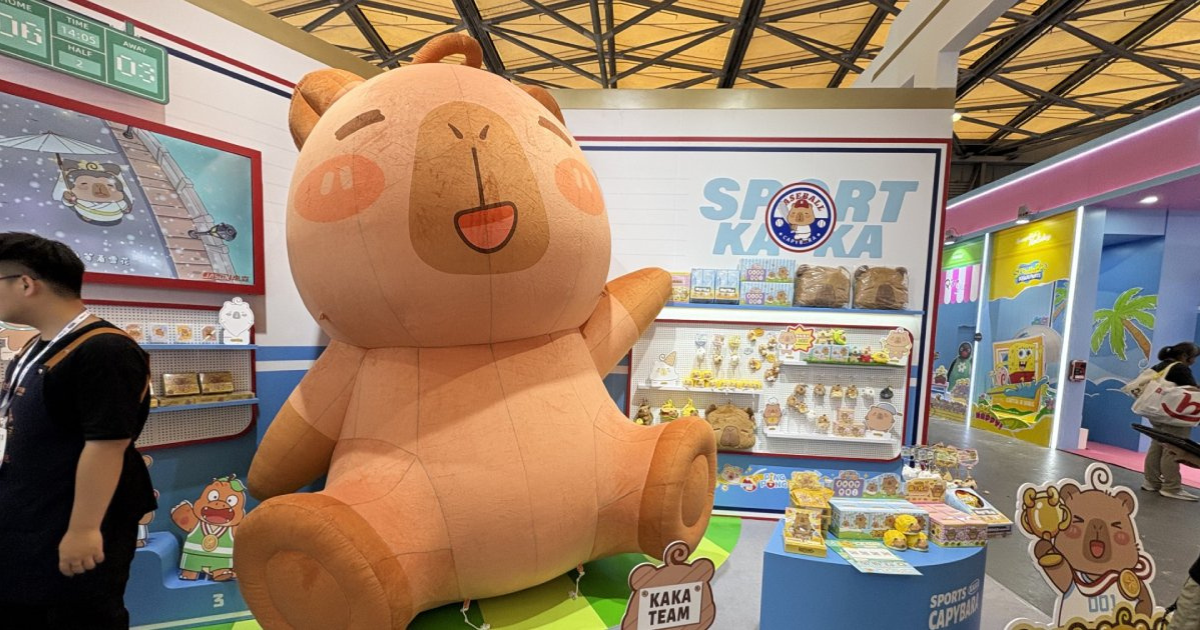The Changing Role of China’s OEM Suppliers

By Mark Seavy
Chinese contract manufacturers, for years the suppliers behind global brands, are moving to make their mark in licensing.
That much was clear at the recent Brand Licensing Expo (BLE) in London as well as at last week’s China Licensing Expo (CLE) and China Toy Expo (CTE) in Shanghai. At these events, companies more accustomed to taking a supporting role for brands instead positioned themselves as potential licensees.
This growing strategy for the region’s original equipment manufacturers (OEMs) and original design manufacturers (ODM) has been stoked by the success of Miniso and Pop Mart, which are transforming into global retailers.
Pop Mart has ridden the success and strong sales of its Labubu collectible dolls, the design of which fueled inspired-by products at China Licensing Expo. Miniso, meanwhile, struck a licensing agreement with WildBrain CPLG’s Peanuts brand in 2023 and took a keynote speaking slot at Licensing Expo last May.
“It is an evolution so that, instead of just being an ODM or contract manufacturer, Chinese companies want to develop their own brands to enter international markets much like Pop Mart and Miniso have done,” said a spokesperson for Shenzhen Qianhai Shiyou International Trade Co., developer of the CuteBee brand that was granted a U.S. trademark in March. “Chinese companies are taking more active approaches to produce good products first, develop a brand, and then enter overseas markets to collaborate with local partners.”
Shenzhen Qianhai Shiyou International, for example, produces miniature doll houses and book nooks under the CuteBee brand, many of which are tailored to regional markets like a tea house design for Japan or a pizza parlor for the U.S. But the company is also seeking inbound licensing and co-brand agreements, the spokesperson said.
In expanding into licensing, however, many Chinese companies must walk a fine line to avoid competing for licenses with their partners.
Hong Kong-based MGM Industries & Co., which is a supplier to Hasbro and other companies, has established separate staff to build its licensing business, Managing Director John Chiu said. In many cases, MGM Industries will seek to share a license and target a market that is not being supplied by its contract manufacturing customers. MGM is licensed to produce a collectible for the La Liga soccer team Sport Lisboa (S.L.) Benfica that is a wooden replica of the team’s eagle mascot.
Yolo park, meanwhile, shopped BLE for licenses to go with those already secured for Hasbro’s Transformers and Peppa Pig. Yolo park has a factory in Shantou, China and offices across the country.
At China Toy Expo, Foshan Master Toys Co., which is a supplier to Mattel and Hasbro, showcased its Master Craft (Peanuts, Frozen, and other licenses) and Vinyl Precious Buddy (Sesame Street Workshop, Minions, and other licenses) brands. Motorhelix, meanwhile, produces diecast cars at a factory in Dongguan, China and displayed licensed replicas of the 2008 Alpha Romeo BC Competition and 2021 Audi R56 Avanti vehicles.
“After the pandemic, many companies didn’t see a future if they were just confined to being an ODM and had to take a proactive approach to their own brands,” the Shenzhen Qianhai Shiyou International spokesperson said. “The reputation for China is low prices so, to advance, companies need to improve and enhance our image. The next step is to build a brand name and identity, so that the companies can become part of the global market.”
While there was a great deal of focus on Chinese companies shedding their OEM- or ODM-only image, China Licensing Expo also featured regional characters in addition to global entertainment IPs. There were original characters modeled on Labubu’s plush bodies and hard plastic faces, and the show was awash in plush and collectible figures modeled on the capybara—the world’s largest rodent that is semi-aquatic, social, and is found in South America. At CLE, brands used the rodent’s friendly image as a link to themes of relaxation and calm.
“Chinese companies need a good foundation for their brands and need to have an awareness of it [with consumers] before they move overseas,” Chiu said. “There is a need to focus on building brands locally and through collaboration both for inspiration for product development and new products for international markets.”




